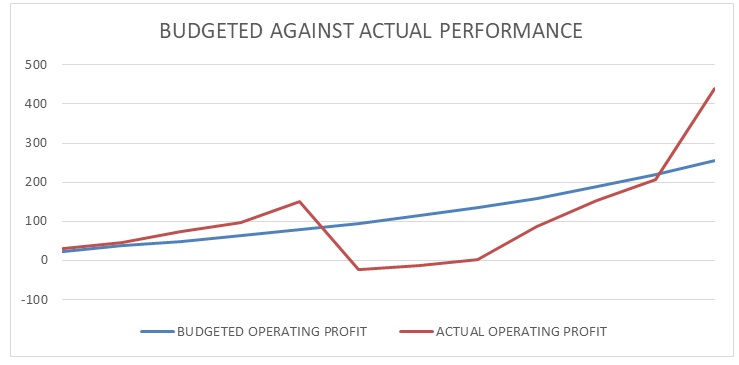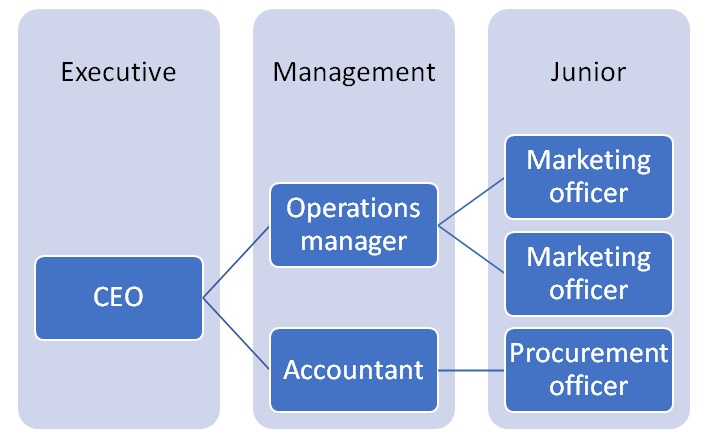Company’s Background Information
Farcargo is a business-to-business online-based logistics service company. The company conducts national wide and international goods delivery for its clients. The company was established in 2006 as a local delivery company where it conducts deliveries in the Seattle locality. In the beginning, the employees would do home and office deliveries for our clients for goods such as groceries, food, and shopping items, among others. However, in 2009 the company changed from local deliveries to national wide and international deliveries. The business operations also change from business to customer to business to business. Most of the company’s services, such as booking, billing, payment, and monitoring, are conducted online.
The company was founded by Adams Johnsons, the Chief Executive Officer, who was assisted by five other senior management staff as follows:
- Chief Finance Officer – Janet Smith
- Chief Marketing Officer- Peter Calgary
- Chief Operations Manager- Susan Milles
- Chief Human Resource Manager- Diana Jones
- Chief Information Technology Officer- Steve Wilson
Farcargo is an e-commerce business and thus does not require numerous brick-and-mortar stores to conduct its operations. The company has a main office in Seattle, its headquarters where it has centralized its processes. The company has well-established online and social media platforms where it connects with its existing and potential clients. E-commerce businesses use this platform to advertise its services and inform clients of their offers and discounts (Chung et al., 2018). Moreover, Farcargo has a website where its clients can log in using their registration details to monitor their goods in transit or previous business deals. Farcargo prides itself in excellent customer service.
Farcargo Current Status
As of December 2021, Farcargo had a total of 18 fully contracted employees and two part-time staff. The company is worth $258 million as its 31st December 2021 financial reports. The company realized a revenue of $27 million in the year. Farcargo has experienced a 5% growth rate in the past three years and expects to exceed this rate by 2% in the next two years. The company is planning to relocate to a new facility, a two-story standalone building.
The Company’s Mission
Farcargo aims to transform global business operations by delivering reliable, affordable, and timely cargo transport services. The company aims to be a leading online delivery cargo company that encourages regional and international trade hence economic growth and stability to our clients. Farcargo focuses on improving the courier industry to exceed global standards.
The Company’s Vision
The company’s vision is to be a reliable and flexible business partner to its clients. Farcargo is determined to be available and offer flexibility in terms of operations, delivery hours, payment methods, mode of transportation, types of goods in transit, and location, among others. It aims at establishing flexible services to suit our diverse clients’ needs.
Company’s Business Type
Farcargo is a business-to-business online cargo courier services provider. The company transports goods within the boundaries of a particular country or beyond its borders. Farcargo deals in road, air, and water transport. For each mode of transport, courier service companies use a variety of equipment in terms of size and shape to suit the kind of goods being transported (Gramatikova, 2020). For instance, for road transport, the company owns four types of trucks of different sizes which enables it to transport different amounts and types of goods. This business is online-based, meaning that its customers conduct their booking, monitoring, billing, payments, and signing-off using an online platform.
Farcargo Customers
Farcargo deals with different types of companies who wish to transport their products or any goods. It has one-time clients and regular or repeat customers. A significant number of the company’s clients are companies whereby that require us to take goods from one location to another. For example, manufacturing companies require it to transport raw materials from the provider to their firms and later hire courier services to transport their output to wholesalers or other clients (Gramatikova, 2020). It also has individual clients who would like to transport personal goods such as cars or other products. Farcargo Company also gets government contracts regularly where it is hired by a government to conduct a delivery.
Demographic Information
The company’s headquarters are located in Seattle but have other regional offices in 40 countries globally. Farcargo conducts its operations in all seven continents but has most of its clients in the U.S.A, Asia, and Europe. In the three regions, Farcargo transports goods within the borders and across to other countries.
Company’s Information Systems Infrastructure

The company’s information system infrastructure comprises four parts; the user interface, applications, business processes, and a database. This infrastructure is supported by hardware, system software, networking, storage, and data centers.
User interface
This is the first and outer view a user interacts with when working with a system (Gramatikova, 2020). The Farcargo interface is rich in color and graphics which guide the user to different functions. For example, the user interface has registration or login buttons, about us, Contact us, Our Services, and Enquiry buttons. The registration or log-in button assists users in easily key in their details for registration to the system or access to their account. The About us button leads a user to more information about the company, such as the company’s history, management, projects, and plans. Moreover, the contact us button allows the user to access the company’s contact information, such as telephone number, email address, and phone number. The user can also make inquiries from this interface which allows them to do so through the inquiry button. The user interface is blue and has images of our transportation equipment, our staff, and the company’s logo.
Applications
After accessing their account, users can then interact with different applications to perform different functions in the system. Some of the functions include booking, cargo monitoring, and retrieval of past business records. The application is also attached to a payment system that allows the client to pay for their services. The booking application is linked to an external calendar which assists clients in keying in the date of their cargo collection. The booking application allows the client to describe the type of cargo with words and pictures so that our team can choose the right equipment to use. Cargo monitoring is done through the application whereby a customer can access the GPS linked to the transportation equipment. They can also access the contact of the staff in charge of their transportation to inquire about the goods. Through the application, clients can access their past business records which are stored in the company’s database.
Business Processes
The system allows the company to perform several business processes with ease. Some of the business processes performed by the system include billing, scheduling, receipt retrieval, and signing off a deal. Once a client books for our services, the system assists the company in scheduling according to the different days and tasks keyed in. This helps to avoid task overlap and delay. The scheduling system also has a reminder that reminds both the user and staff of an upcoming project. The customer is required to key in the type and size of cargo and distance to be transported for billing. The system automatically generates a bill according to the information keyed in. If a customer is unsatisfied with the billing, they can reach out to our staff for more information. After the client pays for their services, a receipt is generated through the system to verify the payment and it is recorded in the database. The client then signs off on the project and has an opportunity to comment on the quality of service delivered.
Database
Critical information is stored in the company’s database. Such information includes customer information, business process information, financial data, billing and payments, staff remuneration information, and equipment data, among others. Information stored in a company’s database is very crucial and requires high-security standards to prevent malicious access and use (Izzah et al., 2021). For this reason, only authorized access is given to a few information system officers in most e-commerce businesses to monitor and maintain the database (Mahamad et al., 2018). The Farcargo database is protected by a security layer developed by the information system team.
A High-level Information System Block Diagram

References
Chung, K. H., Ko, S. Y., & Ko, C. S. (2018). Collaborative and sustainable network design in courier services. In IFIP International Conference on Advances in Production Management Systems (254-261). Springer, Cham. Web.
Gramatikova, E. (2020). Innovations in the global courier services market.Economic Science, education and the real economy: Development and interactions in the digital age, (1), 431-440. Web.
Izzah, N., Dilaila, F., & Yao, L. (2021). The growth of reliance towards courier services through e-business verified during COVID-19: Malaysia.Journal of Physics (18)1, 01204. IOP Publishing. Web.
Mahamad, S., Sulaiman, S., & Leng, W. Y. (2018). An integrated courier services application: a new user experience.In 2018 IEEE Conference on e-Learning, e-Management, and e-Services (IC3e) 161-166. IEEE. Web.